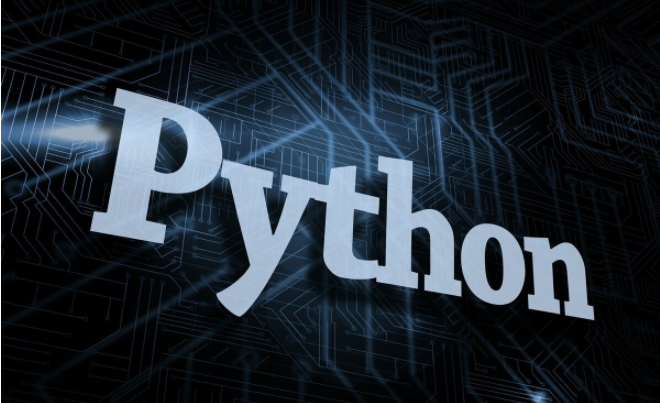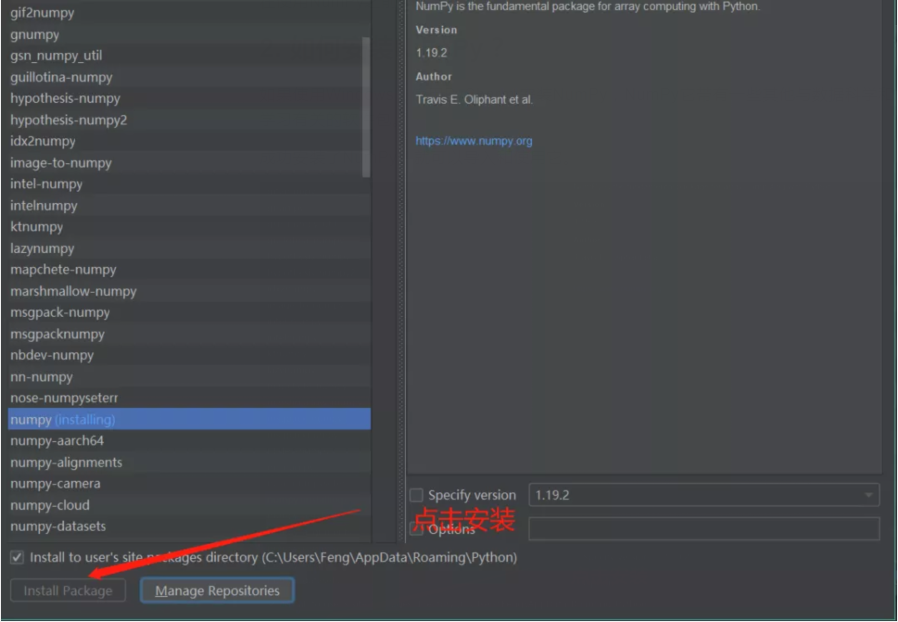
大家好,我是IT共享者,人称皮皮。今天给大家介绍矩阵和NumPy数组。
一、什么是矩阵?
使用嵌套列表和NumPy包的Python矩阵。矩阵是一种二维数据结构,其中数字按行和列排列。
二、Python矩阵
1. 列表视为矩阵
Python没有矩阵的内置类型。但是,可以将列表的列表视为矩阵。
例:
- A = [[1, 4, 5],
- [-5, 8, 9]]
可以将此列表的列表视为具有2行3列的矩阵。
如图:

2. 如何使用嵌套列表。
- A = [[1, 4, 5, 12],
- [-5, 8, 9, 0],
- [-6, 7, 11, 19]]
- print("A =", A)
- print("A[1] =", A[1]) # 第二行
- print("A[1][2] =", A[1][2]) # 第二行的第三元素
- print("A[0][-1] =", A[0][-1]) # 第一行的最后一个元素
- column = []; # 空 list
- for row in A:
- column.append(row[2])
- print("3rd column =", column)
当运行程序时,输出为:

三、NumPy数组
1. 什么是NumPy?
NumPy是用于科学计算的软件包,它支持强大的N维数组对象。
在使用NumPy之前,需要先安装它。
2. 如何安装NumPy?
如果使用Windows,使用PyCharm 安装NumPy,NumPy它带有一些其他与数据科学和机器学习有关的软件包。
成功安装了NumPy,就可以导入和使用它。

NumPy提供数字的多维数组(实际上是一个对象)。
例 :
- import numpy as np
- a = np.array([1, 2, 3])
- print(a) # 输出: [1, 2, 3]
- print(type(a)) # 输出: <class 'numpy.ndarray'>
NumPy的数组类称为ndarray。

注:
NumPy的数组类称为ndarray。
3. 如何创建一个NumPy数组?
有几种创建NumPy数组的方法。
3.1 整数,浮点数和复数的数组
- import numpy as np
- A = np.array([[1, 2, 3], [3, 4, 5]])
- print(A)
- A = np.array([[1.1, 2, 3], [3, 4, 5]]) # 浮点数组
- print(A)
- A = np.array([[1, 2, 3], [3, 4, 5]], dtype = complex) # 复数数组
- print(A)
运行效果:

3.2 零和一的数组
- import numpy as np
- zeors_array = np.zeros( (2, 3) )
- print(zeors_array)
- ones_array = np.ones( (1, 5), dtype=np.int32 ) // dtype
- print(ones_array) # 输出: [[1 1 1 1 1]]

在这里,指定dtype了32位(4字节)。因此,该数组可以采用从到的值。-2-312-31-1
3.使用arange()和shape()
- import numpy as np
- A = np.arange(4)
- print('A =', A)
- B = np.arange(12).reshape(2, 6)
- print('B =', B)

四、矩阵运算
两个矩阵相加,两个矩阵相乘以及一个矩阵转置。在编写这些程序之前,使用了嵌套列表。让看看如何使用NumPy数组完成相同的任务。
两种矩阵的加法
使用+运算符将两个NumPy矩阵的对应元素相加。
- import numpy as np
- A = np.array([[2, 4], [5, -6]])
- B = np.array([[9, -3], [3, 6]])
- C = A + B # 元素聪明的加法
- print(C)

两个矩阵相乘
为了将两个矩阵相乘,使用dot()方法。
注意:用于数组乘法(两个数组的对应元素的乘法),而不是矩阵乘法。
- import numpy as np
- A = np.array([[3, 6, 7], [5, -3, 0]])
- B = np.array([[1, 1], [2, 1], [3, -3]])
- C = A.dot(B)
- print(C)

矩阵转置
使用numpy.transpose计算矩阵的转置。
- import numpy as np
- A = np.array([[1, 1], [2, 1], [3, -3]])
- print(A.transpose())

注:
NumPy使的任务更加轻松。
五、案例
1. 访问矩阵元素
与列表类似,可以使用索引访问矩阵元素。让从一维NumPy数组开始。
- import numpy as np
- A = np.array([2, 4, 6, 8, 10])
- print("A[0] =", A[0]) # First element
- print("A[2] =", A[2]) # Third element
- print("A[-1] =", A[-1]) # Last element
运行该程序时,输出为:

现在,让看看如何访问二维数组(基本上是矩阵)的元素。
- import numpy as np
- A = np.array([[1, 4, 5, 12],
- [-5, 8, 9, 0],
- [-6, 7, 11, 19]])
- # First element of first row
- print("A[0][0] =", A[0][0])
- # Third element of second row
- print("A[1][2] =", A[1][2])
- # Last element of last row
- print("A[-1][-1] =", A[-1][-1])
当运行程序时,输出将是:

2. 访问矩阵的行
- import numpy as np
- A = np.array([[1, 4, 5, 12],
- [-5, 8, 9, 0],
- [-6, 7, 11, 19]])
- print("A[0] =", A[0]) # First Row
- print("A[2] =", A[2]) # Third Row
- print("A[-1] =", A[-1]) # Last Row (3rd row in this case)
当运行程序时,输出将是:

3. 访问矩阵的列
- import numpy as np
- A = np.array([[1, 4, 5, 12],
- [-5, 8, 9, 0],
- [-6, 7, 11, 19]])
- print("A[:,0] =",A[:,0]) # First Column
- print("A[:,3] =", A[:,3]) # Fourth Column
- print("A[:,-1] =", A[:,-1]) # Last Column (4th column in this case)
当运行程序时,输出将是:

注:
使用NumPy(而不是嵌套列表)可以更轻松地处理矩阵,而且甚至都没有涉及基础知识。建议详细研究NumPy软件包,尤其是当尝试将Python用于数据科学/分析时。
六、总结
本文基于Python基础,介绍了矩阵和NumPy数组,重点介绍了NumPy数组,如何去安装NumPy模块,如何去创建一个NumPy数组的两种方式。
通过案例的分析,代码的演示,运行效果图的展示,使用Python语言,能够让读者更好的理解。
读者可以根据文章内容,自己实现。有时候看到别人实现起来很简单,但是到自己动手实现的时候,总会有各种各样的问题,切勿眼高手低,勤动手,才可以理解的更加深刻。
代码很简单,希望对你学习有帮助。
原文链接:https://mp.weixin.qq.com/s/F3IS27o0Yz-ryvaWdEUIOA










